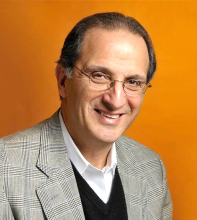You are here
My advice to the January 6 commission: Go deep
Feb 22,2021 - Last updated at Feb 22,2021
I was pleased when I heard that Speaker of the House of Representatives, Nancy Pelosi, was committed to creating a commission to investigate the January 6th insurrection. Upon learning that it was to be bipartisan and was, in her words, to focus on “our security, our security, our security”, I was somewhat less pleased.
Two stories came to mind.
The first was a tale related by a graduate school professor of Buddhist Philosophy:
One day students seeking wisdom approached the Buddha asking the way to the moon. Without uttering a word, the Buddha pointed to the heavens. As the story goes, years later the students were studying the Buddha’s finger.
The second story was a pre-pandemic experience from Washington, DC:
On most evenings during rush hour, at the busy intersection of Connecticut Avenue and K Streets, a very agitated man would show up shouting into a bullhorn at the hundreds of pedestrians hurriedly passing by on their way to the Metro entrance. “Repent and be saved. If you do not find Jesus you are going to be punished for your sins.” No one ever stopped to listen.
I find lessons from both stories to be instructive.
In the first case, the students clearly missed the Buddha’s direction. By focusing on the immediate, they got lost. They stopped their inquiry at the obvious and never reached the goal of their quest.
In the second instance, what was important wasn’t the message of the man with the bullhorn. It’s that no one stopped to hear him out. What he was offering would only become worth paying attention to if people stopped and listened. Only then would it matter.
How does this apply to the call for a commission?
A commission of inquiry is important. But it must not stop at the obvious. In this regard, I read a fascinating interview with former Congressman Tim Roemer, who served on the 9/11 Commission. In this interview Roemer spelled out several issues he hoped the January 6th Commission would examine:
“We need to get to the bottom of the events of January 6. How was it planned? How was it carried out? Why did intelligence miss it? What did law enforcement miss? Was there a role — and what was the role of President Donald Trump or Members of Congress? What were the roles of social media, of disinformation campaigns and conspiracy theories leading up to it, planning it, sharing it and inspiring people to be involved?”
All of these questions are, of course, important and necessary subjects of inquiry, as is the Speaker’s concern with the security of the Capitol. But they all stop short of answering the deeper question as to why so many fell prey to delusional conspiracy theories offered up by Trump, the QAnon cult, and anti-government, armed, violence-prone militias.
The existence of these groups and tactics they employ are worrisome, as is the success of Donald Trump in being able to convince millions that the election was stolen and the very future of America was dependent on “stopping the steal”. But more worrisome is the answer to the question: Why were those millions so susceptible to his message (three-quarters of Republican voters still believe the election was stolen), in the first place, making them fertile ground for these cults? And why were so many military veterans and police officers also so vulnerable to recruitment into these militia?
The answer to why January 6th happened isn’t just Donald Trump or social media or even “the toxic environment of politics in Washington”. Stopping there is like studying the Buddha’s finger. To get to the bottom of the problems that led to 1/6 it is necessary to understand why, to refer back to the lesson of the second of my stories, millions stopped to listen to what the hucksters were offering, whether it was from Trump, “Q”, or the leaders of the Proud Boys?
To get to the root causes of the crisis we are facing, it is necessary to go deeper than the proximate causes of January 6th. It requires the type of in-depth analysis the was carried out by the 1967 Kerner Commission, created by President Lyndon Johnson to examine what caused the massive racial unrest and rioting of that period. The Commission didn’t point to the obvious, they went deep, finding that the anger of black Americans was the result of systemic racism manifested in inequality in employment, housing, education, health care, and police practices. The anger had given way to hopelessness and the result was the volatile rioting that was being witnessed during that period. We had become, the Commission concluded “two societies, one black and one white”. The Commission laid out specific recommendations to address this crisis, which, despite being ignored, were nevertheless important for the understanding they created and roadmap they presented for moving forward.
What is needed today is an equally deep probe into the social unrest among those white voters who were so receptive to Trump’s angry message and the conspiracy theories of the cults. Why are they so angry? What accounts for their alienation and feelings of social, political, cultural, and economic dislocation? What role does racial resentment play in all of this? And what steps can be taken to address their concerns and create healing of the deep divide that currently characterises the American polity?
To some extent, the question we must explore are the same as those faced by Kerner: how have we become so deeply divided into polarised tribes who see the world so differently and what must we do we become one country? If we do not address this concern, the polarisation will continue and it will only be a matter of time before we explode once again.
The writer is president of the Washington-based Arab American Institute













